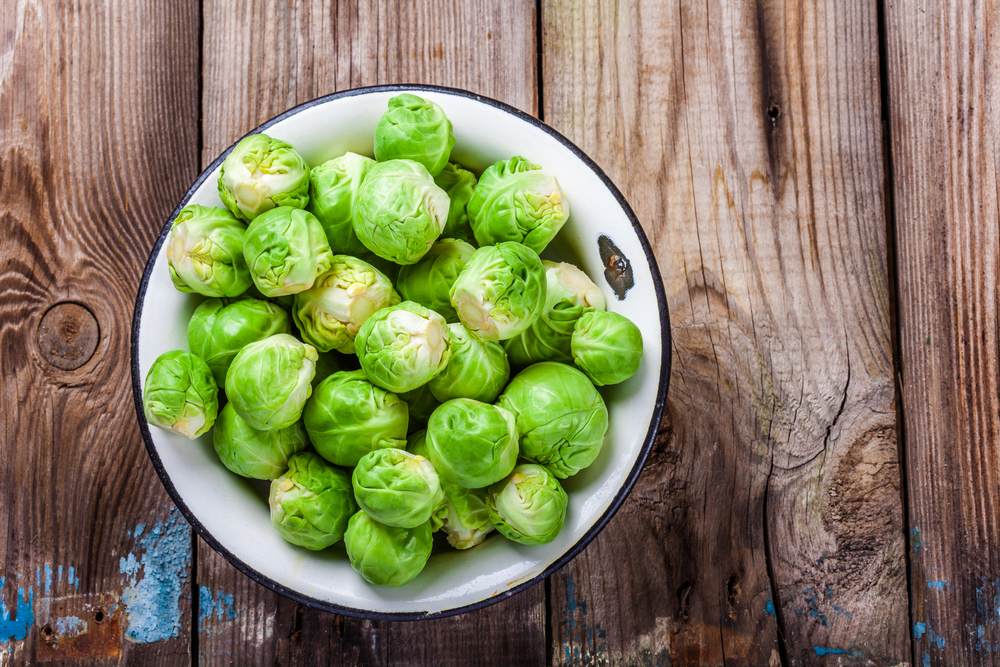
Every child in television history has made it a point to twist their faces in disgust and pinch their noses as their parents hand them a plate full of the dreaded and stinky brussels sprouts. For decades, the brussels sprout has endured a lot of negative press, but they are finally starting to make their way into public favor as celebrity and local chefs alike are creating some of the tastiest dishes starring this powerhouse veggie.
Since they look like a head of cabbage that has just met a shrink ray, it should be no surprise that brussels sprouts are a member of the cabbage in the family Cruciferae (or Brassicacea). Other cruciferous vegetables include turnips, broccoli, cauliflower, kale, and wasabi. Brussels sprouts grow on tall stalks and appear as edible buds, which we call sprouts. Like their cabbage cousins (whose similar edible heads pop out of the ground), brussels sprouts are loaded with good for you fiber, folic acid, vitamins A, C, and K, iron, and manganese, and can help protect your body from colon and stomach cancers. A little more than ½ a cup of these green gems can deliver 4 times more vitamin C than an orange, and at only 35 calories for that ½ cup serving.
With a name like brussels sprouts, we assume that these little guys originated in Brussels. While no one knows for sure their true origin, it is safe to say that they likely originated in Northern Europe. There is evidence of brussels sprouts being grown in Belgium all the way back in 1200, but they would not get their Brussels name until the 16th century when they became widely cultivated by the Belgians.
Though it is in the UK that brussels sprouts are most popular. The UK produces and consumes the most brussels sprouts in the world, but they ar catching on in the U.S. as one of the most flavorful and versatile vegetables.
Yet, for all their yumminess, brussels sprouts are still undergoing a serious PR problem. A 2008 Heinz poll declared brussels sprouts as the number one most hated vegetable in the U.S. and hit pretty high on the British list too. While it is a common struggle for parents to get their children to eat vegetables, brussels sprouts are far and away one of the more appealing vegetables that you can put on a dinner plate, so long as you present them in a non-boiled state.
Boiling, or rather over-boiling your brussels sprouts, is what give them their stinky, sulfuric odor. It was likely the popularity of this flavorless cooking method of over-boiling sprouts in the 1960s helped fuel the hatred of these green buds. Thankfully, there are so many ways to prepare brussels sprouts that it’s surprising they’re not eaten at every single meal. Brussels sprouts can be boiled as stated, but they can also be steamed, broiled, roasted, grilled, stir-fried, eaten raw, and even juiced and thrown into your morning smoothie for a vitamin-packed breakfast.
Brussels sprouts lend themselves well to a variety of seasonings, and can be served sweetened with brown sugar, fried alongside crispy bacon, roasted and dolloped with balsamic glaze, shredded into a hash, braised with Dijon mustard, stir-fried with an Asian twist by adding kimchi, and eaten raw and tossed into salads alongside nuts and grapes slices.
There is no shortage of ways that brussels sprouts are being highlighted in dishes all around the world of late, from California Pizza Kitchen’s Brussels and Bacon pizza to the rediscovery of Julia Child’s French method – drowning them in cream and butter. No matter how you prepare them, just prepare your mouth for a delicious dish that will transform your thinking about these tasty little green buds.

